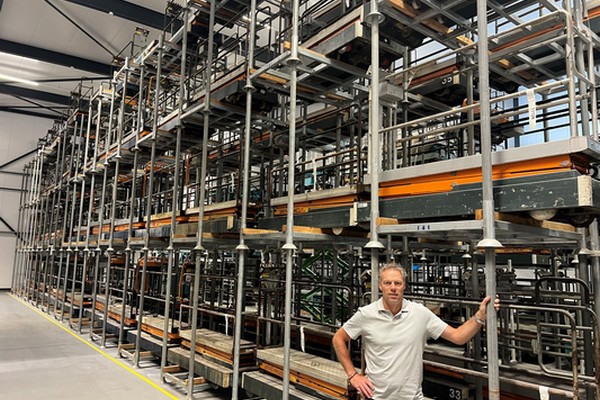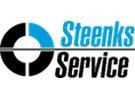Internal transport within greenhouses has evolved quite a bit in recent years. AGVs are no longer an exception. AGV stands for Automated Guided Vehicle. It is an unmanned electrically powered vehicle that transports product from the greenhouse to the processing area and drives back again. It looks futuristic when you see the vehicles driving unmanned; there is no one around. The vehicle drives around completely autonomously.

AGV
Steenks Service sells plenty of AGVs alongside the traditional, tried-and-tested tube rail cars from Berg Hortimotive and Berkvens. Wouter Steenks sees the added value of AGVs mainly in pepper cultivation at the moment. "In pepper cultivation, harvesting is done at height by means of a tube-rail truck with a harvesting container. This complete set, when fully harvested, is placed on the concrete pad. With the push of a button, it will then drive fully automatically to the packing hall. There, the full pepper container is unloaded and it is sent back into the greenhouse with an empty container to the right path. It is different with tomatoes and cucumbers. There, AGV is used but in much smaller numbers. The harvesting of tomatoes is done on foot and the trolleys are collected on the concrete path. Then the fully harvested carts are coupled there and driven to the processing area by an AGV electric tractor. Thus, tomato and cucumber cultivation requires fewer AGV-driven vehicles/technology, while in pepper cultivation, you need an AGV pepper harvester truck every harvest to harvest.
Harvest robot
Technology does not stand still. When asked how Wouter sees developments around harvest robotization, he does not yet see much change in practice any time soon. He understands the need, though, because the labor problem is getting bigger. "It will just take some time before it can be calculated around. The current harvest robots are doing their best, but in my opinion, they just don't reach the capacity standard yet. Moreover, they still leave a +/- 30% of the product to be harvested hanging in a path. Surely it cannot be the intention that, after the robot has done its job, someone still has to go through the paths to take off the +/- 30 % of the bunches not harvested?"
Wouter does wonder about the impact of increasing cultivation in Tunisia and Morocco. This is driven by rising energy costs. "There, land and labor are cheaper on top of lower energy costs. What is the impact on prices? What will happen then? We will see."
The order of the day
But it's all not so far at the moment. Steenks Service will get nice and busy during the crop rotation, as always. Maintenance work on both the site and in the workshop will follow shortly afterward. Wouter: "We expect requests for new internal transport equipment to increase again soon. Investments in the field of energy saving, are behind us for most growers. Time for that which has been left behind: investing in new tubular rail trucks again," Wouter concludes.
For more information:
Steenks Service Tel: +31(0)174-510266
Tel: +31(0)174-510266
info@steenks-service.nl
www.steenks-service.nl
